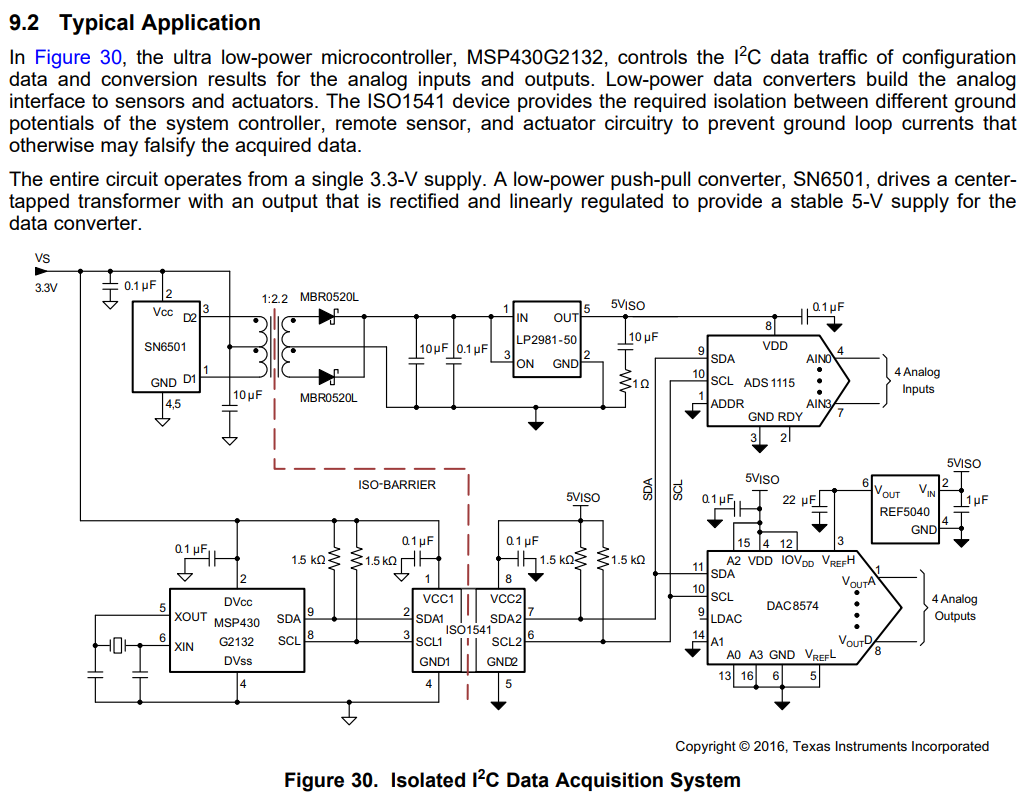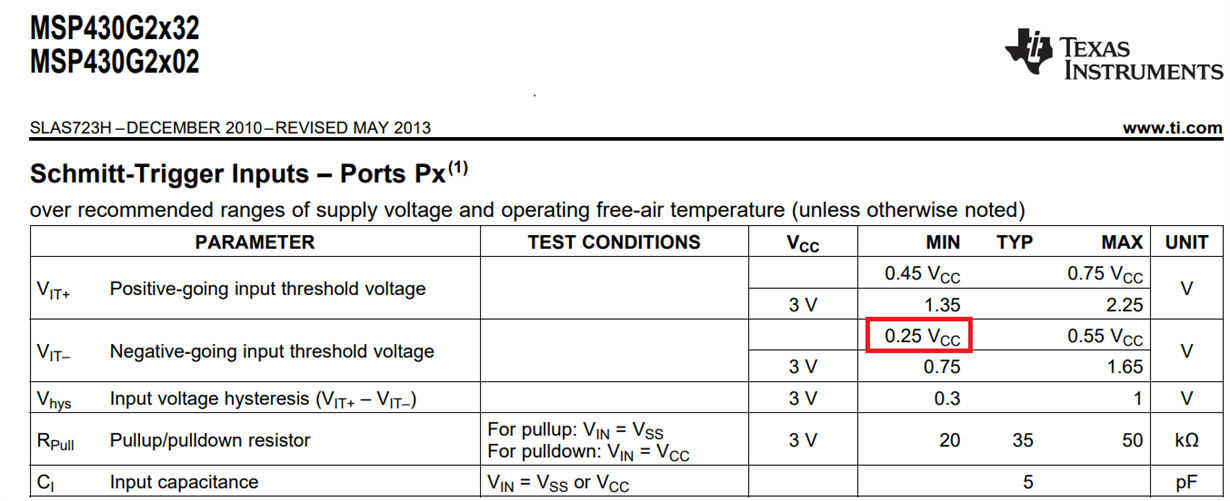Other Parts Discussed in Thread: MSP430G2132
Hi all,
I have read discussion: ISO1540: Customer would like to double check application design
And have a couple of questions:
1) Does this mean that in typical application of ISO1540 (first picture below), lowest margin for voltage is 0.025V (825mV - 800mV = 25mV)?
Vol1 = 650mV - 800mV (ISO1540 SIDE1 low output voltage).
Vit- = 0.25*Vcc - 0.55*Vcc or for Vcc = 3V3 (as in typical application) Vit- = 825mV - 1815mV (MSP430G2132 Negative-going input threshold voltage)
2) Is this enough for reliable operation in temperature range from -40 deg to +85 deg (for example)?
Best regards,
Veljko





